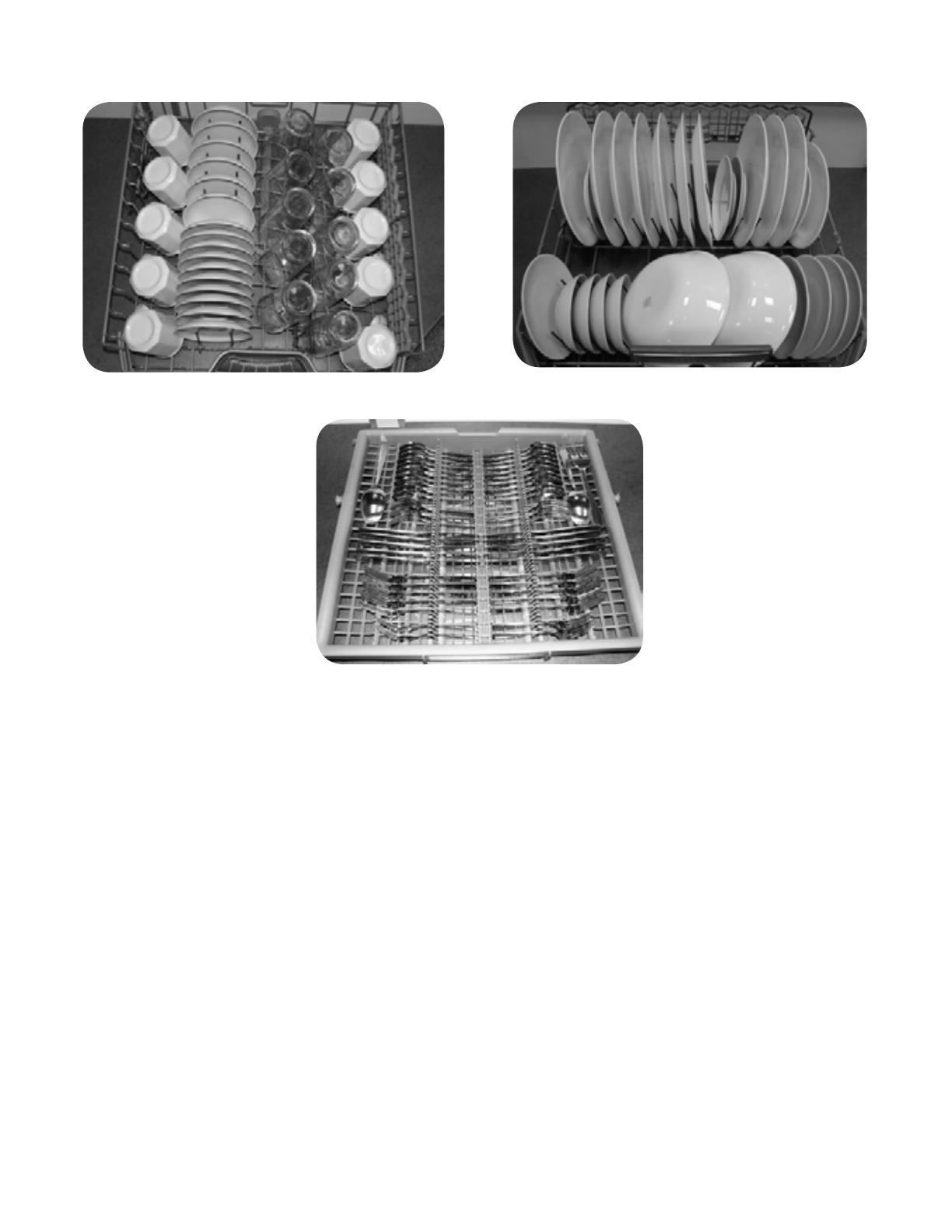
Problem Cause Acon
Dishwasher
does not start
1. Door may not be properly latched.
2. Unit may not be turned on.
3. Unit not reset or previous cycle not completed.
4. Delay start engaged.
5. Interrupon of electrical power supply to dishwash-
er or blown fuse.
6. Child lock acvated (select models).
7. The door may have been closed without rst select-
ing a cycle.
8. Water supply may not be turned on.
1. Shut the door completely.
2. Press the main power switch to turn unit on.
3. To reset, refer to “Canceling or changing the cycle” secon in this
manual.
4. To reset, refer to “Delay Start” secon in this manual.
5. Check circuit breaker.
6. Deacvate the child lock. Refer to “Child Lock” secon in this
manual if applicable.
7. Select a cycle and close the door.
8. Check and turn on water supply.
Dishwasher
beeping (end
of cycle signal)
Default factory sengs alert the customer that the cycle
has completed by beeping. This feature can be deac-
vated if so desired.
To adjust the volume or deacvate, refer to “Cycle Compleon Sig-
nal” secon in this manual.
Display does
not illuminate
or console
lights are not
on
1. A fuse may have been blown or circuit breaker
tripped.
2. Door not closed or latched.
Note: For models with controls on the top poron of the
door, the display only illuminates when the door is opened and
controls are visible.
1. Check the fuse or circuit breaker box and replace the fuse or re-
set the breaker if necessary.
2. Ensure that door is properly latched and completely closed.
Dishwasher
seems to run a
long me
1. Incoming water is not warm enough.
2. Cycle me can vary due to soil and water condi-
ons.
3. Rinse agent dispenser is empty.
4. Dishwasher connected to cold water supply.
Note: Refer to “Cycle Chart Data” secon in this manual
for typical cycle length.
1. Before starng a cycle, run hot water faucet at the sink nearest
to the dishwasher.
2. Sensors in the dishwasher automacally increase the cycle me
to ensure a good wash when heavy soil is detected.
3. Add rinse agent.
4. Verify dishwasher is connected to hot water supply plumbing.
Dishes aren’t
geng clean
enough
1. Spray arm movement is obstructed.
2. Spray arm nozzles clogged.
3. Improper use of detergents.
4. Filters could be clogged.
5. Dishes are nested or loaded too close together.
6. Selected wash cycle is not suitable for food soil
condons.
1. Ensure that spray arm movement is not blocked by hand rotang
spray arms.
2. Remove the spray arms and clean according to “Check/Clean
the Spray Arm Nozzles” in Care and Maintenance secon of this
manual.
3. Increase or decrease detergent depending on the water hard-
ness. Refer to Table under “Adding Detergent and Rinse Agent”.
4. Clean the lter. Refer to “Check/Clean the Filter System” under
Care and Maintenance secon of this manual.
5. Rearrange load such that water spray can reach all items in the
dishwasher. See also “Preparing and Loading” secon of this
manual.
6. Refer to “Wash Cycle” secon in Operang the Dishwasher sec-
on of this manual.
Dishes are not
geng dry
enough
1. Rinse agent dispenser is empty. (Rinse agent indica-
tor is acvated).
2. Improper loading of dishes.
3. Selected cycle does not include drying.
Note: Plasc or Teon do not typically dry as completely
as other items due to their inherent properes.
1. Add rinse agent. The use of rinse agent improves drying.
2. Rearrange load to ensure items are not nested. Refer also to the
“Preparing and Loading” secon of this manual.
3. Rinse and Hold seng does not include drying cycle,
Note: Select models oer an extra heang opons to improve drying
performance. Refer to “Wash Cycle opons” under the Operang
the Dishwasher secon of this manual.
Odor
1. Food debris is present at the boom of the dish-
washer.
2. Food parcles are present near the door seal.
3. Dishes le too long in unit before running a cycle.
4. Residual water is present at the boom of the dish-
washer.
5. Drain hose is obstructed.
1. Remove the lters and clean according to the “Check/Clean the
Filter System” secon of this manual.
2. Refer to “Clean the Door Gasket and Door Seal” in the Care and
Maintenance secon of this manual .
3. Run a Rinse/Hold cycle if you do not intend to immediately wash
the dishes.
4. Ensure the unit has completely drained from the last cycle. Refer
to the “Canceling or changing the cycle” secon of this manual.
5. Remove any obstrucons from the drain hose by calling qualied
personnel.
Note: If odor sll persists, run the Normal/Regular cycle unl it ushes
and interrupt the cycle and place an 8 oz. cup of dislled white vinegar
soluon on the top rack and then nish the cycle.
SELFHELP
Dishwashers may occasionally exhibit problems that are unrelated to a malfuncon of the dishwasher itself. The following informaon may help you
with a dishwasher problem without involving a repair professional.
20



















